Horses helped settle Canada centuries ago and continue to be an important part of Canadian agriculture. Distinct horse breeds created by the challenges of Canadian weather and terrain are the pride of horse lovers throughout the country. The Newfoundland Pony, the Canadian Horse, the Canadian Warmblood and the Sable Island Horse are the results of this history.
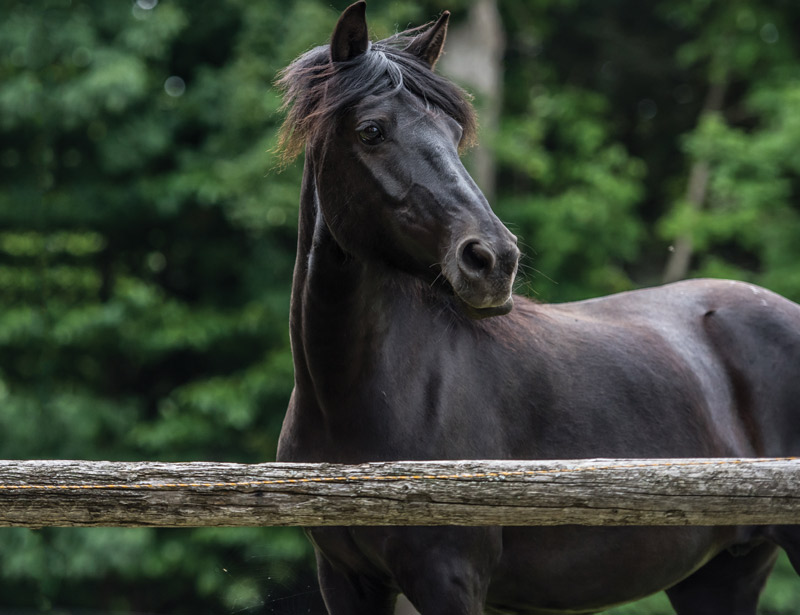
Newfoundland Pony
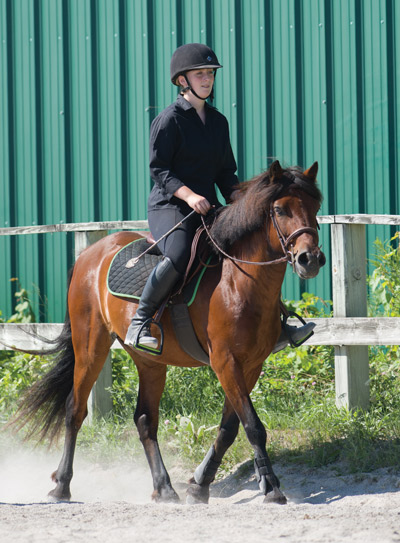
Within a few hundred years of living and working on the island, the ponies of Newfoundland had become a distinct breed. Farmers and fishermen used them to plow gardens and fields, haul fishing nets and kelp from the shore, and serve as riding and carriage horses.
As with many working breeds, the Newfoundland was replaced by modern machinery. By the time the Canadian government stepped in to protect the Newfoundland Pony, less than 100 individual ponies survived. The Newfoundland Pony Society and the Newfoundland Pony Conservancy Center are two organizations working to preserve the 400 ponies left of this critically endangered breed, as listed by the Equus Survival Trust, Rare Breeds Canada and the Livestock Conservancy.
Newfoundland Ponies vary in type, from fine-boned to stocky. They stand anywhere from 11 to 14.2 hands, and come in bay, black, brown, chestnut, dun, gray and roan. Their mane and tail are thick, their fetlocks are feathered, and their hooves are hard.
Those who live with this pony value its temperament above all else. Their willingness, connection to humans, and unflappable nature helps them excel at any discipline asked of them: riding, driving, hauling, sleighing and even therapy work.
Canadian Horse
In the early 1600s, the first French settlers in Quebec struggled to farm enough food to get through the winter without the help of horses. They used their hands and primitive agricultural tools to till the soil during the short growing season.
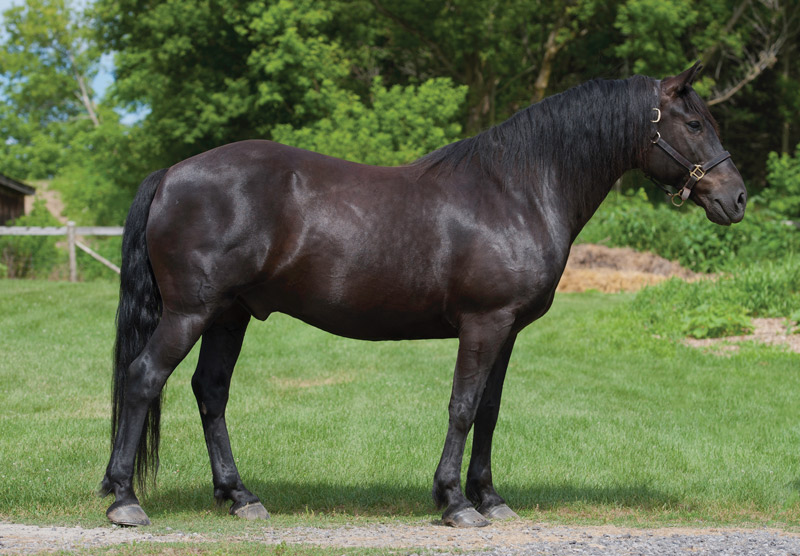
After decades of this harsh existence, King Louis XIV of France sent two small shiploads of horses to the colonists. The horses that arrived carried the blood of the Norman, Breton, Arabian, Barb and Andalusian breeds.
Only the toughest of these horses went on to survive in this rugged land. By the 1700s, a breed perfectly suited to the harsh Canadian terrain had developed. Though small, this new Canadian Horse plowed fields, pulled logs, carried small children and raced for sport.
The fame of the Canadian Horse (known as le Cheval Canadien in the province of Quebec) stretched deep into New England. By the 1800s, Americans were using them to improve their own horses. It also led to a smaller number of purebred Canadian Horses.
By the time machinery began to replace horses in the early 1900s, the Canadian Horse began to decrease even more in numbers. By the 1970s, only around 400 purebred Canadian Horses remained, mostly in the province of Quebec. Through the hard work of breed advocates, the Canadian Horse now numbers around 2,000, according to the Livestock Conservancy, with most horses located in the U.S. and Canada.
The Canadian Horse has maintained much of its original conformation over the centuries. The breed standard calls for a horse with dense bone, strength and noble carriage, and with a short head, a straight neck, and a strong, short back. Standing 14 to 16 hands and weighing 1,000 to 1,400 pounds, they are mostly black, brown, bay and chestnut. A small group of breeders is working to bring back colors that were lost, including cream and palomino. This year, the first double-dilute cream Canadian Horse in over 100 years was born in Canada.
This versatile breed successfully competes in many disciplines, including dressage, hunter/jumpers, driving and western events. Their endurance, hardiness and unflappable temperament also make them great trail horses.
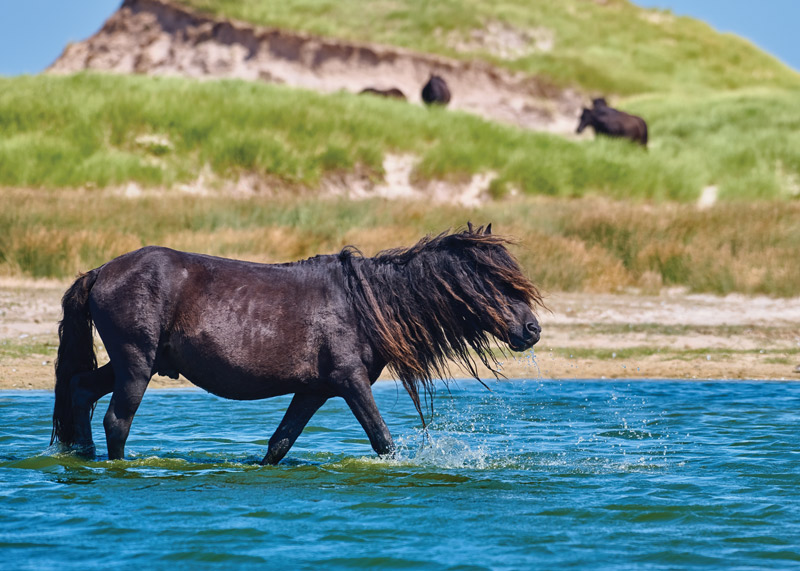
Sable Island Horses
Give feral horses some time and they can learn to withstand the toughest of environments. A perfect example of this adaptability is Canada’s Sable Island Horse.
Brought to the 26-mile crescent-shaped Sable Island in the 1700s, the ancestors of today’s Sable Island Horse learned to endure in this harsh land of sand, salty sea air and sparse vegetation. Located 196 miles off the coast of Nova Scotia, Sable Island has winters that are unforgiving and continuously challenge the horses’ ability to survive.
Standing 13 to 14 hands tall and mostly bay and chestnut in color, Sable Island Horses are believed to have Norman, Andalusian and Spanish Barb ancestry. An average of around 500 horses live on the island at any given time. Researchers allowed to study the islands’ horses for the past two years showed that starvation and internal parasites cause anywhere from 5 to 25 percent mortality in the horses from late winter to early spring.
Now protected by the Canadian government, along with the rest of Sable Island National Park Reserve, Sable Island Horses were regularly rounded up during the 19th and early 20th centuries. As recently as the 1950s, they were sold almost exclusively for dog food, nearly wiping them out.
In 1960, advocates for the horses—including thousands of children who wrote to their legislators—stepped in to save them. Today, Sable Island Horses live only in the wild; the last domesticated horse died in 2019.
Not many people get to see the Sable Island Horse in the flesh. Visitors to the island must register with Parks Canada in advance and arrange for their own transportation by sea or air.
Canadian Warmblood
What happens when you take European Warmbloods, like the Hanoverian, Holsteiner, and Oldenberg, and breed them in Canada? You get a Canadian Warmblood. Add Canada’s unique rearing conditions of wide open spaces and often tough winters and you get a Warmblood produced as nature intended with strong bones and even temperament.
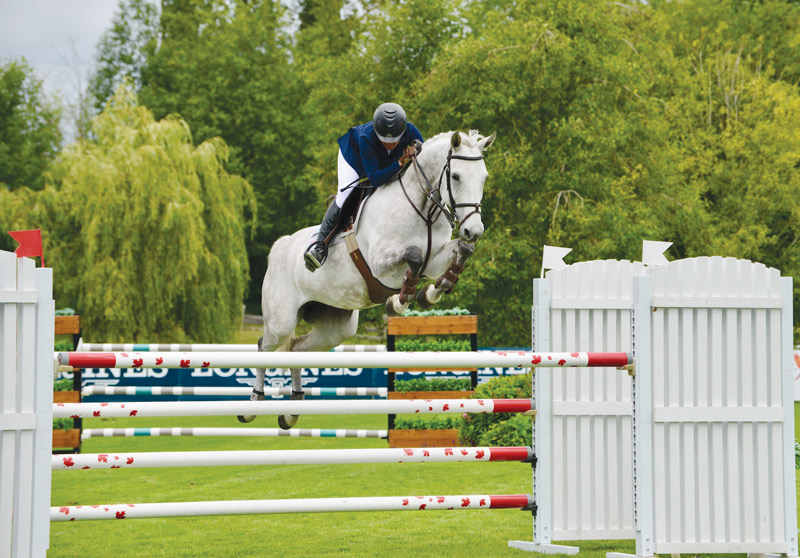
In 1991, The Canadian Warmblood Horse Breeders Association (CWHBA) incorporated under the Animal Pedigree Act. The goal was to unite breeders for the purpose of furthering Warmblood horse breeding in Canada. The association works to unite breeders, owners and friends of Warmblood horses in Canada; to maintain the Stud Book of Canadian Warmblood horses; to maintain a uniform breeding program of Warmblood horses in Canada; to promote breed shows and representation in exhibitions; and to encourage public understanding of the Canadian Warmblood horse.
The CWHBA asks its breeder members to strive for a medium-sized, well-bred Warmblood that has natural talents for the Olympic and related equestrian sports: dressage, jumping, driving, eventing and hunters. Their goal should be a horse with correct conformation for soundness and longevity in one of these sports. Canadian Warmblood breeders should also work toward a horse with an even temperament who will serve as a willing partner for both amateur and professional handlers alike.
Using the bloodlines of the great European Warmblood studbooks combined with the careful work of Canadian breeders, the country is making its mark at the international (FEI) levels. Canadians are seeing the results of this effort. Over the past 20 years, Canadian Warmbloods have become ubiquitous at regional and national shows and made names for themselves at both the Olympics and the FEI World Equestrian Games.
This article about Canadian horse breeds appeared in the October 2020 issue of Horse Illustrated magazine. Click here to subscribe!
Canadian Breed Registries◆ Canadian Horse Breeders Association |





